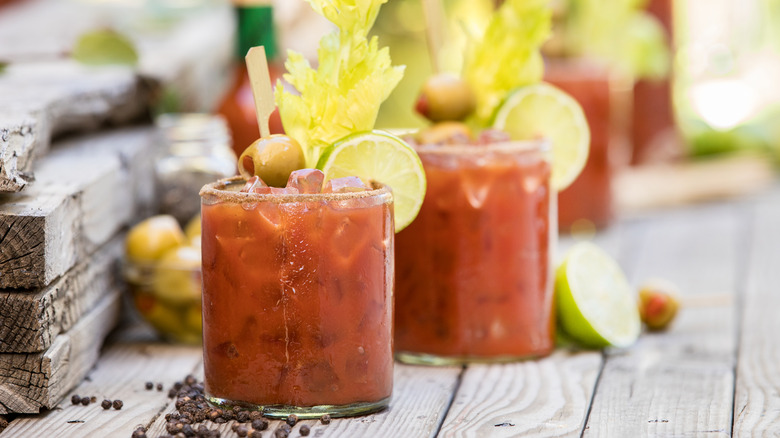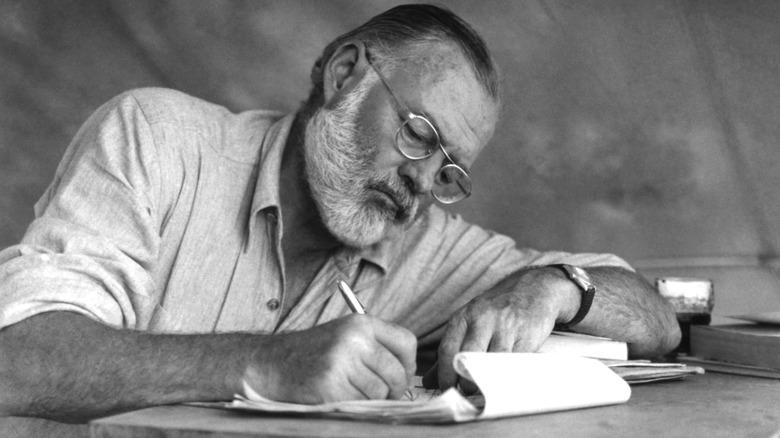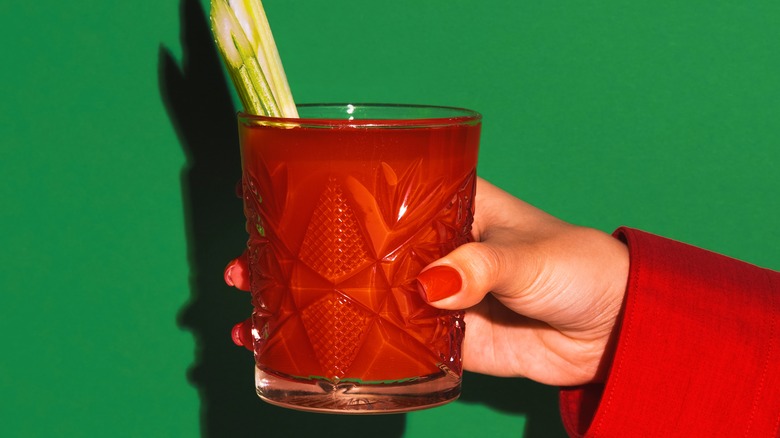Ernest Hemingway's Take On The Bloody Mary Is As Simple As It Gets
Ernest Hemingway cemented a literary legacy throughout his esteemed career. However, one detail that may have slipped under the radar about the American author is his passion for the Bloody Mary cocktail. A champion of the Bloody Mary, it may be surprising to many people that historians believe Hemingway never drank while he worked. Although he's often miscredited as saying, "Write drunk, edit sober," the author was critical of his peers William Faulkner and F. Scott Fitzgerald, who indulged as they wrote. Nevertheless, the author was so fond of the Bloody Mary that he fashioned a go-to recipe of his own, using only the basics.
Most consider the Bloody Mary to be a cure for post-alcohol malaise. Primarily composed of vodka, tomato juice, lemon juice, salt, pepper, and tabasco, the Bloody Mary has been a prominent fixture of supposed hangover cures since its inception in France in 1921, where the drink was initially dubbed the Red Snapper thanks to its combination of vodka (brought to Paris by Russian immigrants) and tomato juice (courtesy of American expats).
The American author kept it simple when it came to the Bloody Mary
Born in 1899, Ernest Hemingway penned several classics such as "The Old Man and the Sea," "A Farewell to Arms," "For Whom the Bell Tolls," and "The Sun Also Rises." He led a decorated life as a writer and war veteran until he died in 1961. In a series of letters written to his friend Bernard Peyton, Hemingway described his perfect formula for Bloody Marys, a popular cocktail in Paris, where Hemingway lived throughout the 1920s.
According to Hemingway, the first thing to get right when mixing a Bloody Mary was the quantity. In the author's eyes, anything less than a pitcher of the cocktail was a waste. A liter each of vodka and tomato juice was mixed together, along with a tablespoon of Worcestershire sauce (which Hemingway typically went heavy on if he happened to be suffering from a particularly intense hangover). Throw in juice from two limes, and a bit of celery salt, cayenne, and black pepper, and voila — it was a drink fit for a king (or at least to Hemingway's taste).
Modern variations of the classic cocktail include Tabasco sauce and lemon juice instead of lime — as well as a considerably reduced amount of vodka. Ice can also be included to dilute any overwhelming flavors.
The Bloody Mary was originally a non-alcoholic drink
Though Hemingway may have popularized the cocktail, the earliest incarnation of the Bloody Mary can be traced to a late 19th-century beverage known as the Prairie Oyster. Drank as a shooter, the Prairie Oyster comprised an egg, spices, and a dash of either Worcestershire sauce or vinegar. The Red Snapper was closer to the cocktail we know today, with the egg replaced by vodka when Russian immigrants brought the popular spirit to Paris after fleeing the Russian Revolution.
The Bloody Mary known today derives its name from Queen Mary I, the only surviving child of King Henry VIII and his first wife, Catherine of Aragon. The first queen to rule England in her own right (rather than through marriage) led a brief but bloody reign, gaining the nickname "Bloody Mary" thanks to her ruthless pursuit of Protestants in Britain. Later in Chicago, the recipe for the Bloody Mary evolved to include celery sticks and peppercorns, adding further spice to this rejuvenating beverage now considered a welcome addition at brunch gatherings.


